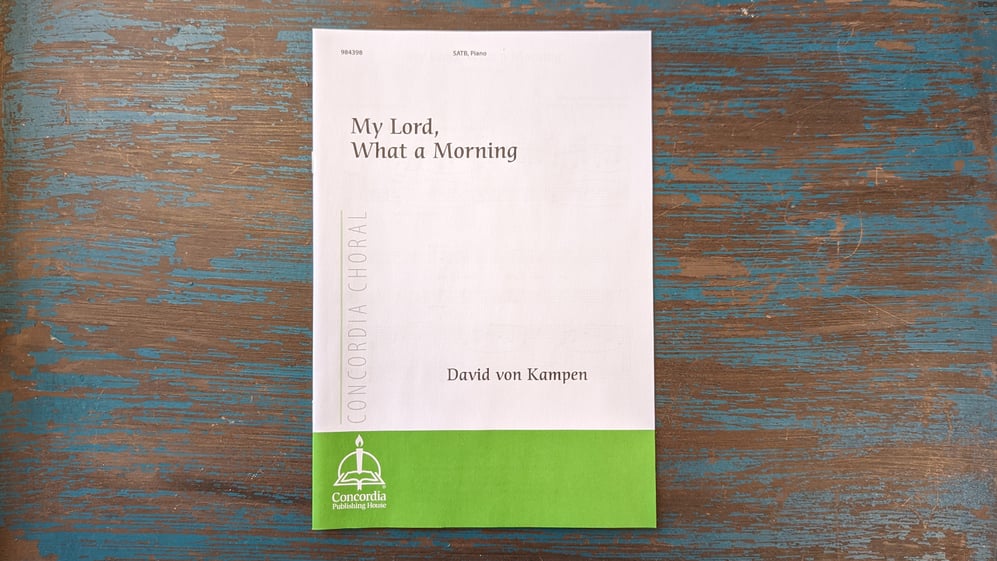David von Kampen has set this anthem for End Times or Advent for SATB choir and piano. It begins with unison choir on the first refrain and moves to SATB in the first verse. The piece closes with a quiet unison phrase. This is sure to become a choir favorite!
The Text
“My Lord, What a Morning” is borne out of the African American spiritual tradition. It appears in Lutheran Service Book: Accompaniment for the Hymns (968) and in Lutheran Service Builder. The histories of spiritual songs can be classified in more than one way. These songs appeared in nineteenth-and-twentieth-century hymnbooks, but many of them began outside the walls of the church building.
African American spiritual songs can be traced back to the pre-Civil War plantation south, where slaves working the fields would sing with one another and to one another. This kind of singing has been given the name “call-and-response.” The words of these songs also carried double meanings. A song containing biblical imagery about the Lord delivering His people from slavery in Egypt or bondage to sin and death was also a poignant sign of hope that the enslaved in America would one day enjoy freedom.
One of the scriptural sources for this song is Matthew 24:29: “Immediately after the tribulation of those days the sun will be darkened, and the moon will not give its light, and the stars will fall from heaven, and the powers of the heavens will be shaken.” This verse prophesies the second coming of Christ, when He will bring redemption to His people. Thus, the song is fitting during the end of the Church Year and Advent, when the church turns its attention to Judgement Day and the three-fold coming of our Savior: once at His birth, now through His Word and Sacraments, and again on the Last Day.
Call-and-Response Singing
A distinguishing feature of spiritual songs is the call-and-response style. Lines or phrases are often repeated. The leader of the song sings (“calls”) a line by himself, and then the entire chorus repeats (“responds”) the line. This manner of singing is present in the refrain to “My Lord, What a Morning,” when the lines “My Lord, what a morning” and “When the stars begin to fall” are sung twice.
Another element of call-and-response singing is apparent in the verses of “My Lord, What a Morning.” The first line of each verse is different (“You’ll hear the trumpet sound . . .” “You’ll hear the sinner cry . . .” and “You’ll hear the Christian shout . . .”), but the final three lines are the same for each verse (“To wake the nations underground, / Looking to my God’s right hand, / When the stars begin to fall”).
You can imagine this call-and-response singing in action on the southern plantation. The leader introduces the first phrase of a refrain or verse for all to hear, and everyone joins in response, making that sentiment their own. They had no songbooks to follow when they sang, so they relied on the leader to know what to sing next.
Remaining True to the Original Style
David von Kampen’s SATB setting of this anthem offers a meditative and expressive interpretation of the song while remaining true to the original style and tune. The piece begins in unison, with all voices singing the first “My Lord, what a morning,” signaling the first “call” of the refrain. When the voices break into harmony for the second “My Lord, what a morning,” the presence of the full chorus is evident, illustrating the “response” to the first line.
Each of the three verses also begins in unison, signaling again the “call” at the beginning of each verse before the “response.” The final three lines of each verse are the same each time, and they are treated with both unison and harmonic textures. The piano accompaniment contains flowing eighth-note lines and rhythmic chord progressions.
Scripture: ESV®.
Order your copy of “My Lord, What a Morning” today.













.jpg?width=50&height=50&name=IMG_20220621_160541_456%20(1).jpg)
